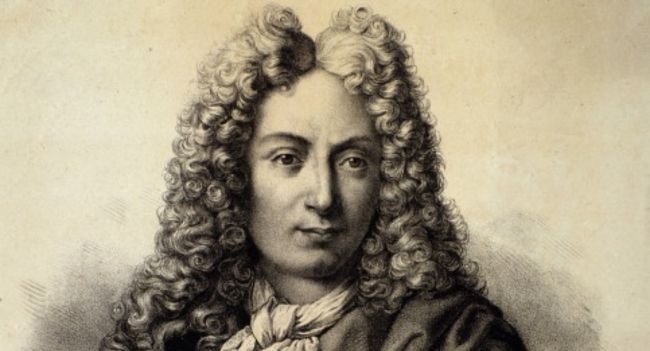As we eagerly await October 27, 2023, the release date of our new CD set of Arcangelo Corelli’s Concerti Grossi Op. 6, and as the images of the first three “video chapters” of the visual album inspired by the composer’s music play out on our digital channels, it becomes inevitable to look back with renewed interest and gratitude at the life and career of a man who contributed so much to music.
Arcangelo Corelli’s legacy is a leap into the future that spans almost four centuries and begins only a few years after his birth in Fusignano in 1653. He was still very young when he was impressed by the sound of a violin played by a priest: a love at first sight. Right from the start, his talent was so striking that his mother – now widowed and with five children to look after – set aside the idea of having a scholar son and invested in his musical training, first placing him in the care of masters in Faenza and Lugo, then allowing him to move to Bologna.
When he was only 13 years old, Corelli began studying with virtuosi at the basilica of San Petronio, getting in touch with famous masters such as Giovanni Benvenuti, Leonardo Brugnoli and perhaps Giovanni Battista Bassani. At 17 he was admitted to the prestigious Accademia Filarmonica, one of the most selective music schools in Italy at the time. Soon, even Bologna grew on him and, at the age of 20, he left for Rome.
In a short time, he became the leading violinist in the capital: the most important clubs and academies wanted him, the theatres gave him the direction of works by important composers and he shone on stage in his double role of conductor and first violin. Above all, great patrons competed for him. First Queen Christina of Sweden, then Cardinal Benedetto Pamphili, who welcomed him into his residence with the title of music master. As if by magic, he was now living as a nobleman, escorted by a personal servant: not bad for a boy from a small village!
In the cardinal’s opulent palace, every occasion was a good one to celebrate with concerts, serenades and oratorios. Whether it is the visit of an important personality, the anniversary of an event or the usual Sunday musical afternoon, Corelli proved his skills as a violinist and established himself as a composer by performing some of his sonatas for 3, published in Rome in 1681. By this time he was conducting often majestic orchestras, with almost a hundred musicians!
Just when he seemed to have reached the pinnacle of professional success, a new breakthrough came.
Taking advantage of Pamphili’s absence, Cardinal Ottoboni approached the undisputed star of the city and hired him. Corelli moves into the Palazzo della Cancelleria, the residence of the man who will be not only a generous patron, but also a brotherly friend.
New honours and confirmations arrived around this time. In the spring of 1706, Corelli was admitted to one of the most influential intellectual circles of the time, the Accademia dell’Arcadia, along with Pasquini and Scarlatti. Shortly afterwards, the young Händel, who was in Rome and had just composed the oratorios Il trionfo del Tempo e del Disinganno and La Resurrezione, asked him to conduct the performance by playing first violin. “But, my dear Saxon, this music is in the French style, which I don’t understand”, was his comment at the first rehearsal… and Händel had to change the overture!
At the age of 55, without ever having stepped off the top of the wave, Corelli experienced his first health problems and decided to retire from the stage to devote himself completely to his masterpiece: the composition, or rather the revision, of a series of concerti grossi to be published as Opera Sesta. The compilation of the 12 concertos went on for five years in a race against time that, inexorably, devoured him.
Arcangelo Corelli’s death came on January 8, 1713, at the age of not even sixty. It swept through the city and the entire artistic community like a hurricane. Cardinal Ottoboni ordered that he be buried in the Pantheon, a privilege never granted to a musician. There, the anniversary of his death was solemnly celebrated for many years.
The twelve Concerti Grossi Opera Sesta, which were published posthumously, are the means through which Corelli’s immortal figure survived through the centuries, influencing generations of composers including Antonio Vivaldi, Georg Friedrich Händel, Johann Sebastian Bach and François Couperin, as well as many others, including the Piedmontese Giovanni Battista Somis, through whom Corelli’s influence reached Gaetano Pugnani and Giovanni Battista Viotti.
And this notwithstanding a catalogue that, compared to many of his colleagues, may appear to be somewhat sparse: six collections of instrumental music, the only genre Corelli tackled. Yet the quality and extraordinary richness of his compositions was enough to elect him the definitive model of the composer. With his concerti grossi, Corelli achieves the perfection of the genre, the complete codification of the form in the refined alternation of Concertino and Ripieno, a model for anyone who has written instrumental music.
This is one of the reasons why we at Accademia Bizantina, together with our Conductor Ottavio Dantone, have chosen to perform the Concerti Grossi Op. 6 by Arcangelo Corelli in our upcoming box set, a tribute to the memory and value of the maestro from Fusignano. His music, spanning generations, centuries and epochs while maintaining intact all its splendour and emotional power, has remained at the top of the charts for over 370 years.
